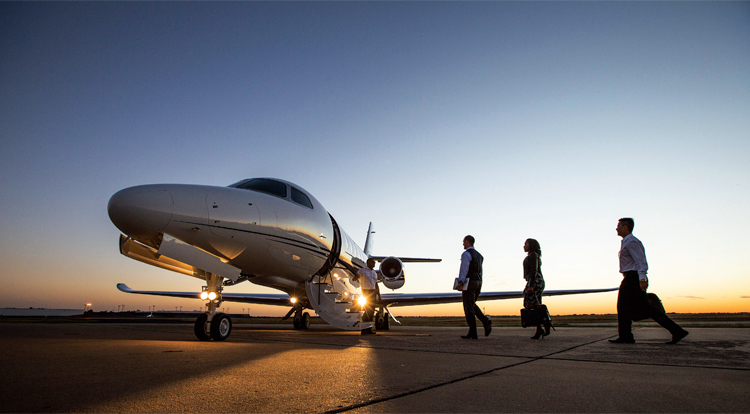INDIAN ARMED FORCES CHIEFS ON
OUR RELENTLESS AND FOCUSED PUBLISHING EFFORTS

SP Guide Publications puts forth a well compiled articulation of issues, pursuits and accomplishments of the Indian Army, over the years

I am confident that SP Guide Publications would continue to inform, inspire and influence.

My compliments to SP Guide Publications for informative and credible reportage on contemporary aerospace issues over the past six decades.
Business Aircraft Financing
An understanding of factors related to Business Aircraft Financing will help an organisation to obtain finance for the acquisition of Business Aviation assets with minimum financial outgo in chosen timelines and to retain profitability

Business aircraft are defined as those flying machines which are neither utilised by the air forces of a country nor are they deployed as scheduled operators which are approved by the aviation regulatory authority of a country. They can be bought by individuals for their exclusive use or by organisations for exploitation by their own employees or can be hired out to other willing flying customers.
NEED FOR FINANCING
All business aircraft are expensive and hence, require a substantial amount of money to be paid upfront for their acquisition. Most of these aircraft are built in Europe or in the United States of America. As a result, they have to be flown into India, but prior to that, apart from the basic cost of the aircraft, the supporting infrastructure along with the technicians and pilots needed to operate the aircraft have to be acquired or employed. This is an expensive proposition which attracts heavy maintenance and operating expenses. The former is a heavy outgo of funds and is a capitalinvestment whereas, the latter is a revenue expenditure which is comparatively less, but nonetheless, it requires to be incurred on a regular basis. Business jet buyers prefer to obtain low cost finance for their capital acquisition. They prefer to use their own liquidity to meet the revenue expenditures incurred on staff, maintenance and aircraft operations as the outgo of funds is not spaced out. Consequently, most business jet acquirers prefer to seek a loan to finance the initial heavy capital expenditure.
FACTORS AFFECTING THE FINANCING OPTIONS
Today, a plethora of aircraft financing options is available. They all come with their own advantages and disadvantages. Hence, it becomes very important for the prospective aircraft acquirer to understand the purpose for which the aircraft was being bought and the aviation environment in which it will operate. The latter includes the accounting system, depreciation, interest outgo, operating costs, taxation, the required profitability, the residual value including the salvage worth of the aircraft, the creditworthiness of the borrowing agency or individual, credit rating awarded to the buyer, the time duration for which the aircraft will be used and the loan tenor, influence the choice of financing options. Political situation over the geographical area where the aircraft will be operating is also an important consideration.
POLITICAL SITUATION AND FACTORS
Political stability including the political administration model prevailing over the geographical footprint of the area where the financed business aircraft will be operating is of particular importance in selecting the mode of finance being preferred. Various political factors that need consideration before finance mix finalisation include whether the nations are investor friendly with respect to aviation; whether this allows repatriation of profits; tax largess; interest payments and regulations by the nation’s civil aviation authority. This is a very significant aspect, because once a Business Aviation aircraft is acquired and registered in a country, it is difficult for it to be relocated to another nation without incurring losses and deviations from the main purpose for which the aircraft was bought. Based on all these factors, the various financial models available are enumerated in the subsequent paragraphs.
BUSINESS AVIATION FINANCING MODELS
Outright Cash Down based purchase is the easiest way of acquiring an aircraft. It provides flexibility of choices; involves the minimum time as cash is the darling of every seller. However, since the quantum of initial capital investment is gigantic, organisations are seldom able to take out this volume of cash to acquire Business Aircraft without jeopardising their own operations. Hence, this is an unpopular model.
Sale and Leaseback is one of the most popular methods of aircraft acquisition. The buyer procures the aircraft of choice and through a pre-decided agreement, it resells it to a financier only to lease it back from the latter. As per the report published by Boeing, there were only about a hundred leasing companies in 2002. This number has now grown to about 150 in 2018. It further states that approximately 50 per cent of its sales in 2018 were on a sale and leaseback system. The rest of them were through direct lease of aircraft.
Direct Lease involves leasing companies that predict the demand for popular aircraft and procure these to lease them to the direct users
Direct Lease involves leasing companies that predict the demand for popular aircraft and procure these to lease them to the direct users. Leasing usually involves making about 10 to 30 percent down payment. The rest of the money is paid over a period of ten to fifteen years depending upon the requirement.
Financing through an Operating Lease involves the acquisition of an aircraft on lease for a period of usually less than ten years. Such short duration leases could be to cater to a specific surge in demand, for example, for Haj pilgrimages, or for patrons moving to attend a certain international sporting event. This lease could also be utilised by Business Aviation owners who see a small window of opportunity that can be exploited without actually having to be saddled with an undesirable inventory of aircraft.
Aircraft Sub Assembly Specific Finance involves the funding by a commercial lender for a specific heavy investment assembly of an aircraft. An example is choice between Pratt and Whitney or GE engine for a particular aircraft being acquired as a business asset. Since, only specific, costly assemblies are financed, the amount of loan is comparatively lesser.

Fractional Ownership of business aircraft is a popular method of financing aircraft purchases in the USA. Under this system, the multiple stakeholders with common interest, pool in their financial resources to buy the aircraft. The investors in return, obtain a fractional share of the aircraft in terms of ownership, operating costs as per usage, division of fixed maintenance and other expenditures based on their fractional shares. The fractional shareholding offers its investors preferential aircraft usage flight entitlement. The profits, too, are divided on the basis of the fractional shares amongst the fractional owners. This system is unpopular in India because depreciation cannot be appropriately availed by all the fractional owners.
Private Equity can also be utilised for capacity enhancement or for procurement of Business Aviation assets. This is a flexible method of acquiring finance so long as the terms are mutually agreeable to the private equity provider and the acquirer of the business aircraft.
The fractional shareholding offers its investors preferential aircraft usage flight entitlement. The profits, too, are divided on the basis of the fractional shares amongst the fractional owners. This system is unpopular in India because depreciation cannot be appropriately availed by all the fractional owners.
Asset-Based Financing is used by established companies to raise capital as loans from financial institutions on the basis of their inventory, plant and machinery or other assets being pledged as collaterals to finance aircraft upgrade or procure business aircraft. This method is also used to either upgrade the aircraft or to tide over a particular period of financial liquidity challenge in Business Aviation cycles.
Insurance Companies and Provident Funds in certain Western economies are also keen to finance business aircraft procurements for creditworthy organisations that have good and sure cash flow plans. This way, the former are able to provide a better financial return to their investors.
Corporate Trust-Based Lease is a popular system prevalent in the US wherein companies create a trust that holds aircraft for offshore investors based on certain conditions. The latter enjoy taxation and other operational benefits by being based in the US but while being owned by organisations that are offshore. Similarly, aircraft, when financed through Japan Leveraged Lease or Hong Kong Leveraged Lease, are also entitled to fiscal benefits on Business Aviation assets offered by these nations.
Sometimes, the aircraft manufacturers, too, have overflowing order books and become cash rich. Such business aircraft manufactures then exploit this situation. They themselves offer financing facilities or options to their credible buyers through separate subsidiaries at unique financial terms.
CONCLUSION
Financing a Business Aviation asset or business aircraft is not just limited to only one of these above mentioned sources of finance. Finance can be sourced from multiple agencies and in different proportions so that there is a minimum financial outflow of cash for loan liquidation. The financing mix customisation will ensure a regulated fund outflow during the tenor of the loan. This will ensure that cash remains positive in all the timelines of an aviation business. The aircraft acquisition finance mix also depends upon the useful life of the aircraft, the time-period for which the aircraft will be retained and the political stability predicted in the foreseeable future for own operations. A comprehensive and pragmatic understanding of all of the above-mentioned factors will help an organisation to obtain finance for its Business Aviation assets by ensuring a minimum financial outgo and that too, as per its own chosen timelines and also to retain its profitability.





